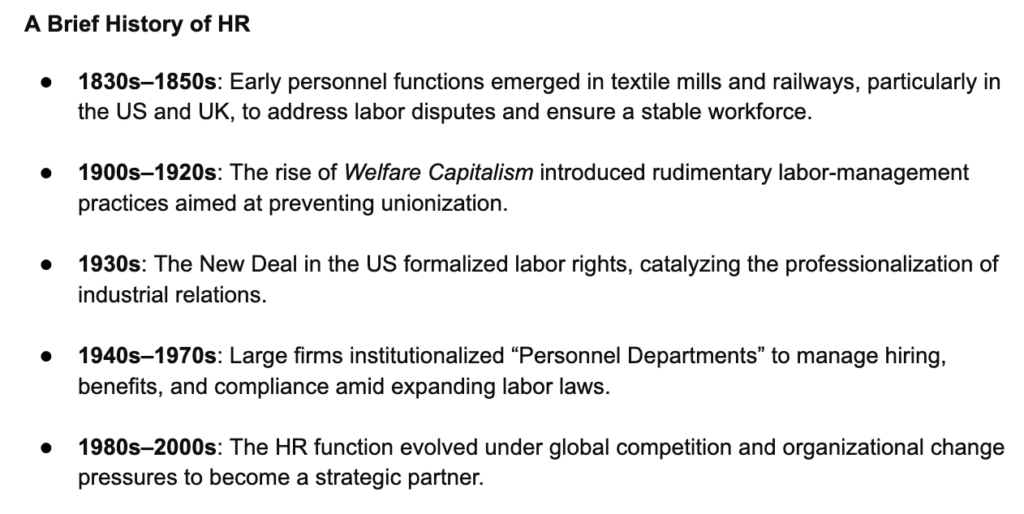by Nasrulloh R.
During a warm discussion over coffee with some fellow Security Professionals, we came on a conversation over an interesting article by Rachel Briggs, on what Corporate Security as a function can learn from HR path from administrative tasks for the company towards more strategic ones at C-Suite level. This insightful analysis on the evolution of corporate security has sparked valuable discussions and added to my coffee consumption during the discussion.
However, some partial interpretations may have failed to see the full context and oversimplified her arguments, suggesting that corporate security should emulate HR’s trajectory to the C-suite. To my observation, these interpretations tends to cherry-pick the original article’s argument to justify an unrealistic fixation towards C-Suite seat for corporate security role. These partial interpretations overlooks the distinct historical, regulatory, and organizational contexts that differentiate the two functions. Hence to the defense of Rachel Briggs’ argument, I will cover the contexts to have clearer view on the subject.
Historical Foundations: Divergent Origins
Human Resources (HR):
The formalization of HR can be traced back to the early 20th century, emerging from the need to manage labor relations during the Industrial Revolution. HR is arguably a legitimate offspring of Industrial Revolution, to ensure workers availability, controllability, and affordability. Companies established personnel departments to handle hiring, training, and compliance with labor laws, especially as governments began to regulate working conditions and workers’ rights .

HR was not granted nor seized power. It was structurally built into the post-industrial firm, because governments and businesses had aligned interests: workforce control, predictability, and compliance.
Corporate Security:
In contrast, corporate security functions began to take shape in the mid-20th century, primarily focusing on protecting physical assets and preventing theft. The role expanded over time to include aspects like executive protection and, more recently, cybersecurity . However, unlike HR, corporate security did not originate from a regulatory mandate but rather from internal business needs.

Regulatory Mandates
Governments around the world have a strong interest in regulating labor to ensure fair wages, safe working conditions, and workers’ rights. This has led to legal requirements for companies to establish HR functions that ensure compliance with labor laws. In many jurisdictions, failing to have a competent HR department can result in legal penalties.
Conversely, while certain industries may have regulations pertaining to security (e.g., data protection laws requiring cybersecurity measures), there is generally no universal legal obligation for companies to maintain a corporate security function. This positions corporate security as a discretionary function, often tailored to a company’s specific risk profile rather than a standardized regulatory requirement.
Organizational Perception and C-Suite Representation
The disparity in C-suite representation (or if we go further, Board Member representation) between HR and corporate security professionals reflects their differing roles within organizations. According to a BambooHR study, while 100% of Fortune 100 companies have HR leadership, only 74% have HR representation at the C-suite level . In contrast, corporate security roles, excluding Chief Information Security Officers (CISOs), are rarely represented at the executive level in non-security industries.
The increasing prominence of CISOs highlights the growing importance of cybersecurity. However, this trend also underscores a shift in how organizations perceive security—prioritizing digital over physical aspects. The integration of physical and information security underlines the evolving nature of threats and the need for a cohesive approach to risk management.
Strategic Integration Over Hierarchical Elevation
While the aspiration for corporate security to attain C-suite status is understandable, it is essential to recognize that influence does not solely stem from hierarchical positioning. Corporate security can achieve strategic significance by:
- Embedding security considerations into business processes and decision-making.
- Collaborating across departments to address multifaceted risks.
- Demonstrating value through proactive risk mitigation and crisis management.
By focusing on these areas, corporate security can enhance its relevance and impact without necessarily having an obsession for a seat at the executive table.
Conclusion
Rachel Briggs’ work provides a valuable framework for understanding the potential evolution of corporate security. However, it is crucial for us to interpret her insights within the appropriate context.
Corporate security should aim to integrate strategically within organizations, leveraging its unique strengths to support business objectives.
Rachel Briggs has made it clear in her postulate “Focus on what you deliver, not what you do.”. Rather than emulating HR’s path to the C-suite, or obsessively fixated to be in one, corporate security should chart its own course, grounded in its distinct history, regulatory environment, and organizational role.
Endnotes:
- Rachel Briggs. “What can corporate security learn from HR’s journey to the C-Suite?”. https://rachelbriggs.org/2024/05/16/what-can-corporate-security-learn-from-hrs-journey-to-the-c-suite/
- HappyOrNot. “When did human resources start and who created it?” . https://www.happy-or-not.com/en/insights/blog/beginning-human-resources-although-called-personnel/
- Security Executive Council. “A Brief History of Corporate Security Leadership and Its Future.” . https://www.securityexecutivecouncil.com/insight/security-leadership/a-brief-history-of-corporate-security-leadership-and-its-future-1094
- BambooHR. “The State of Human Resources Leadership Report (2023 Data)”. https://www.bamboohr.com/resources/data-at-work/data-stories/2023-human-resource-leadership
- PR Newswire. “26% of Fortune 100 Don’t Have Human Resources in the C-Suite.” . https://www.prnewswire.com/news-releases/26-of-fortune-100-dont-have-human-resources-in-the-c-suite-new-bamboohr-study-on-the-state-of-hr-leadership-finds-301729347.html

